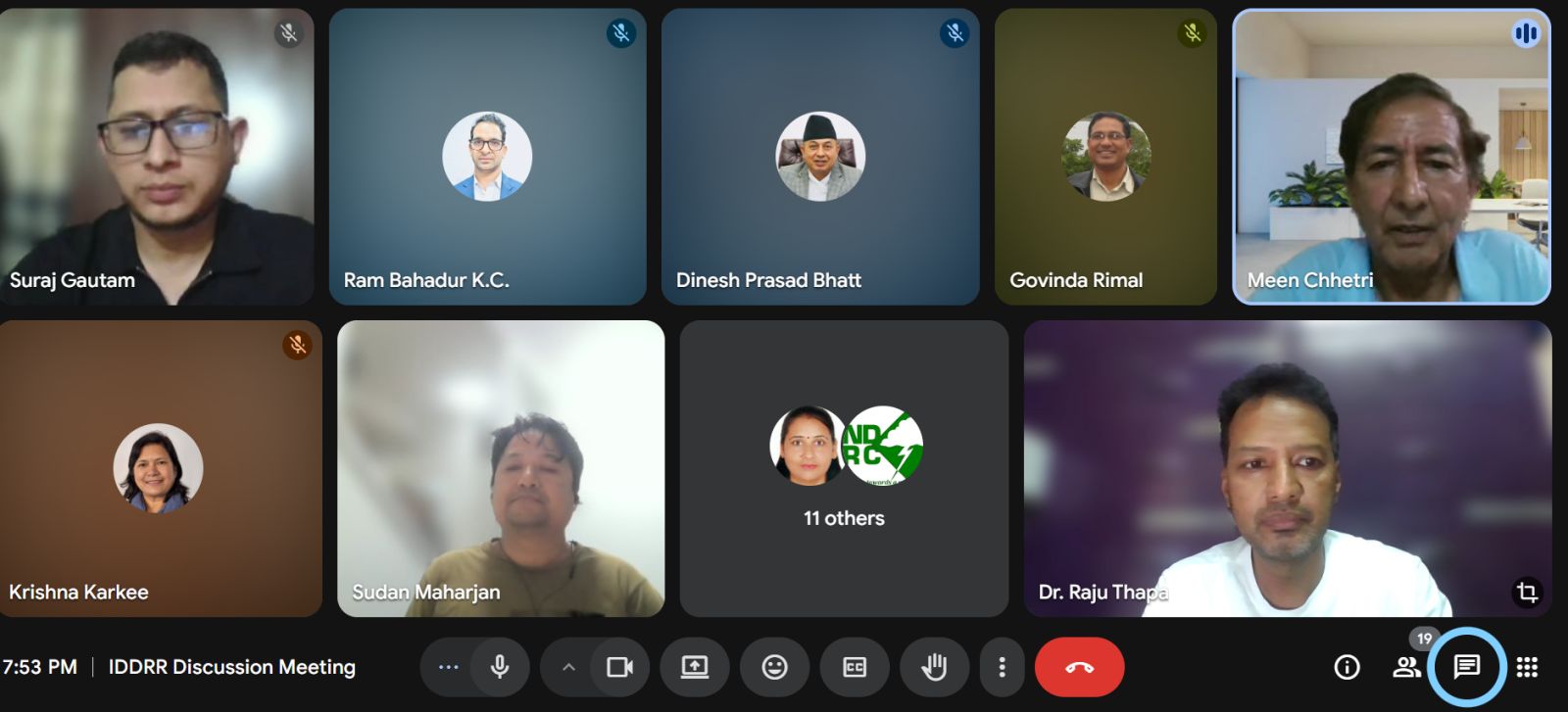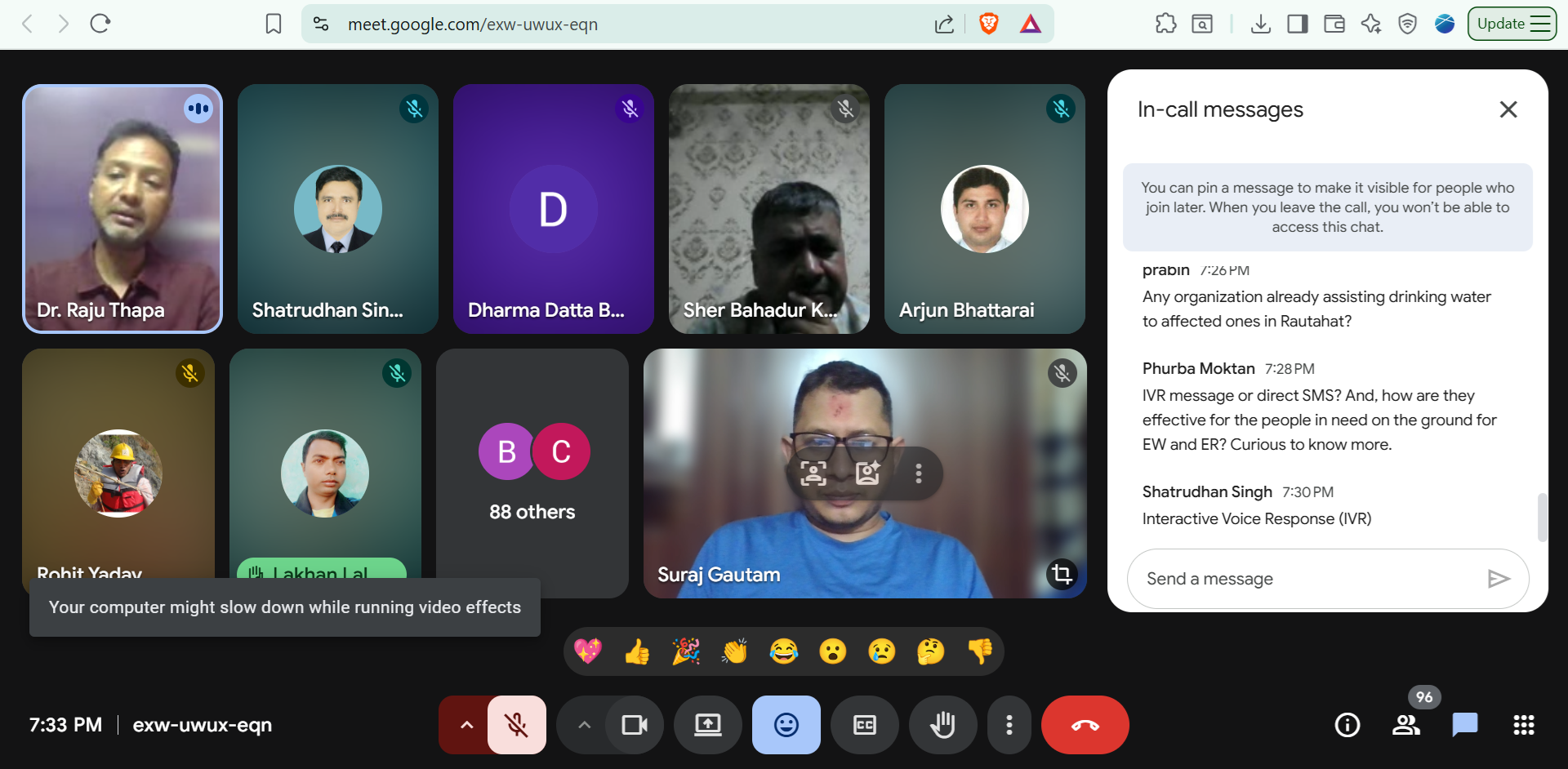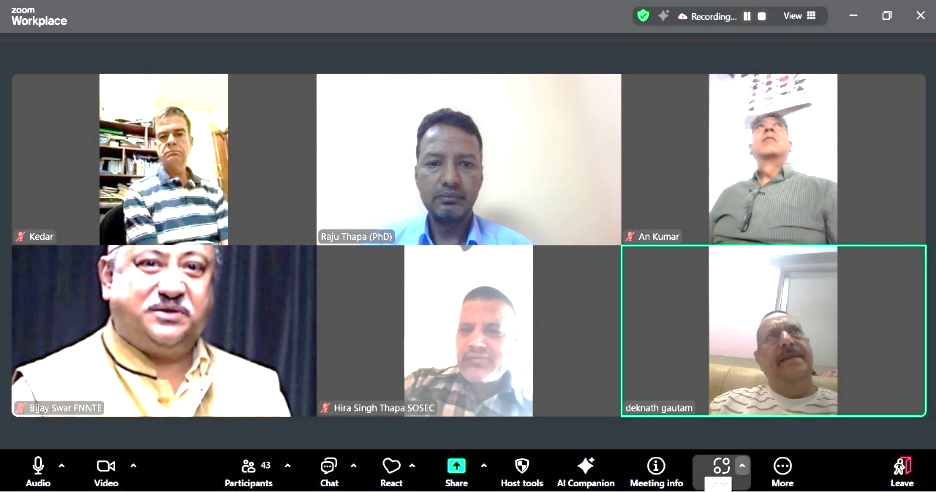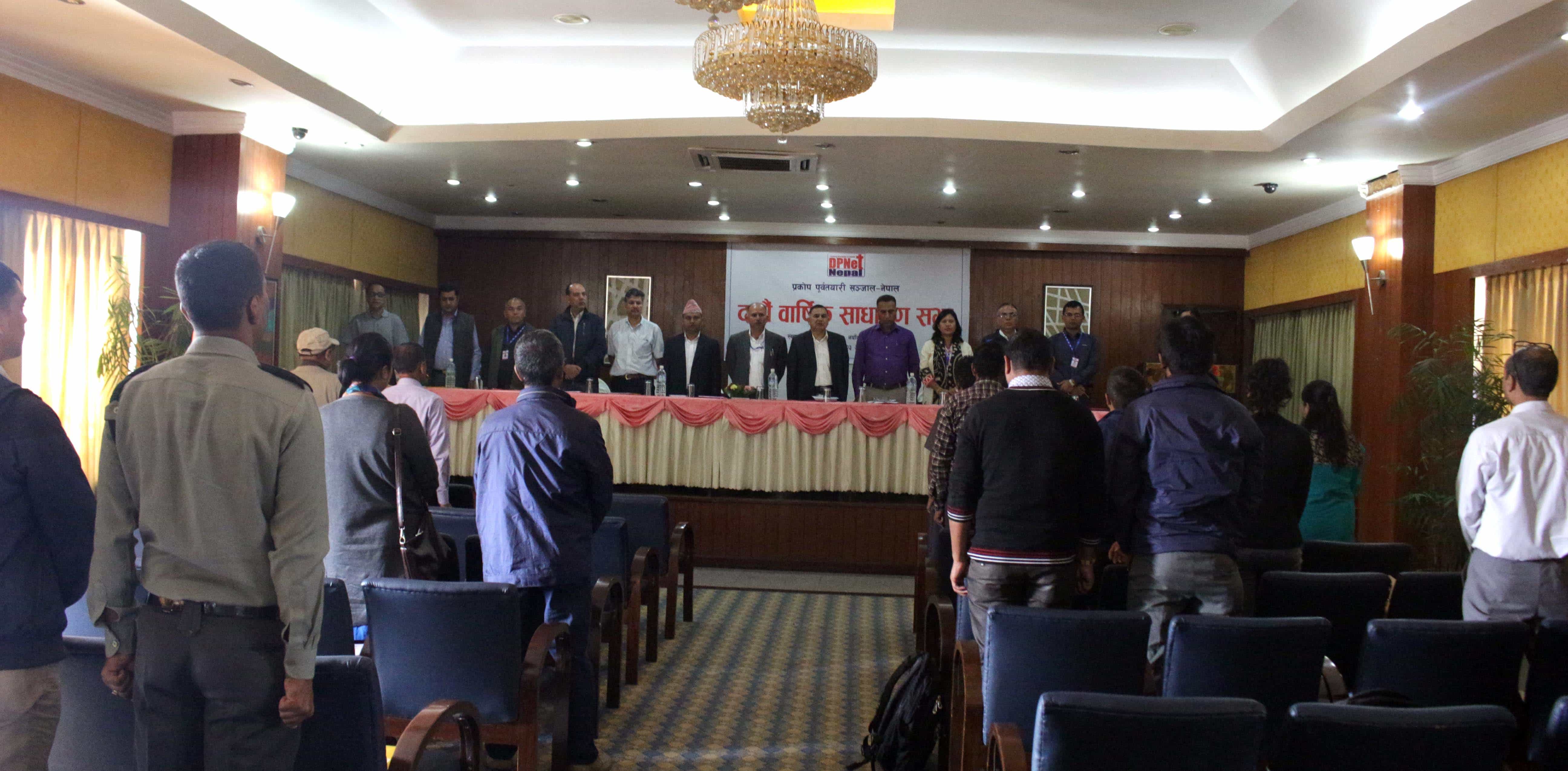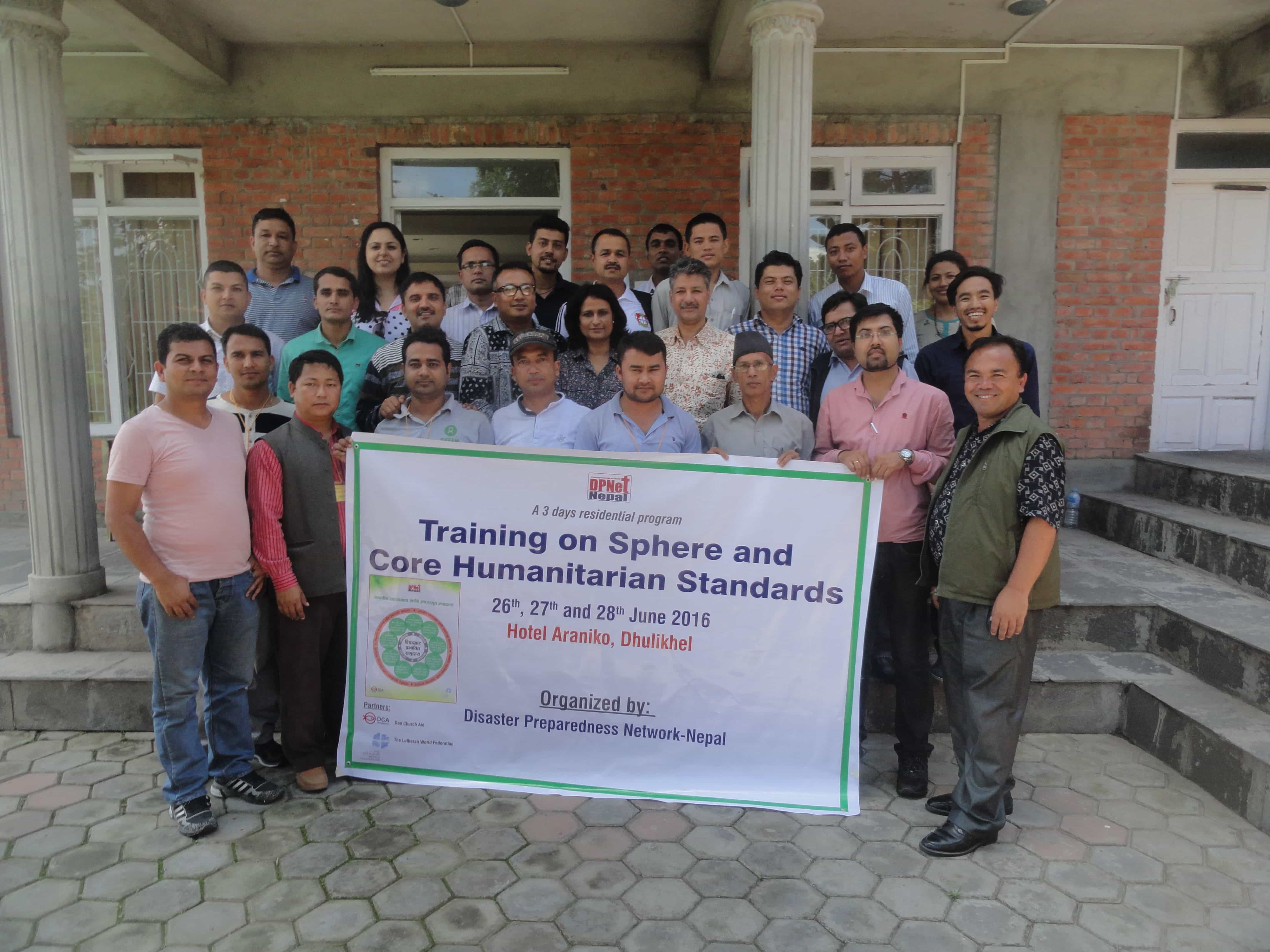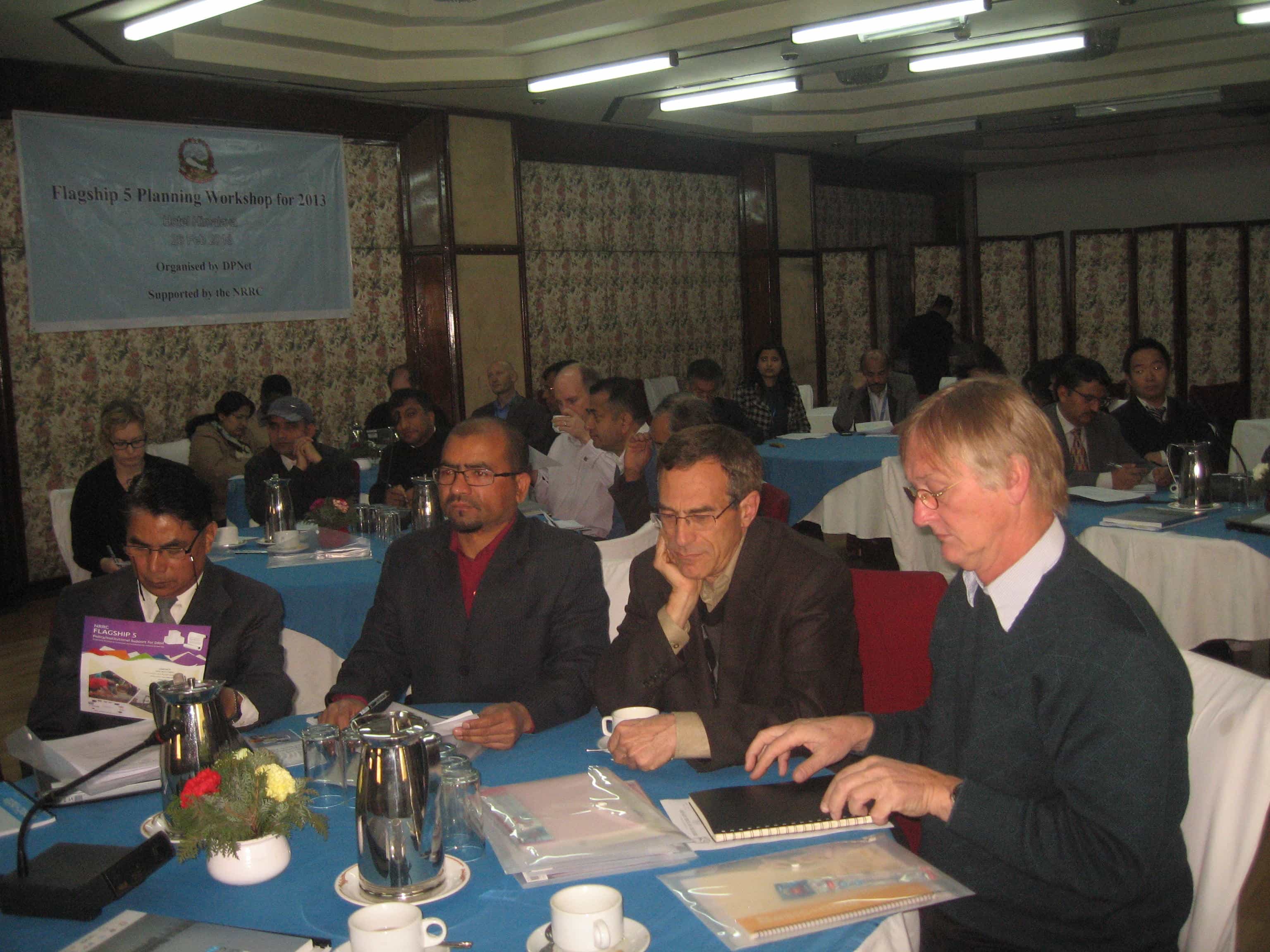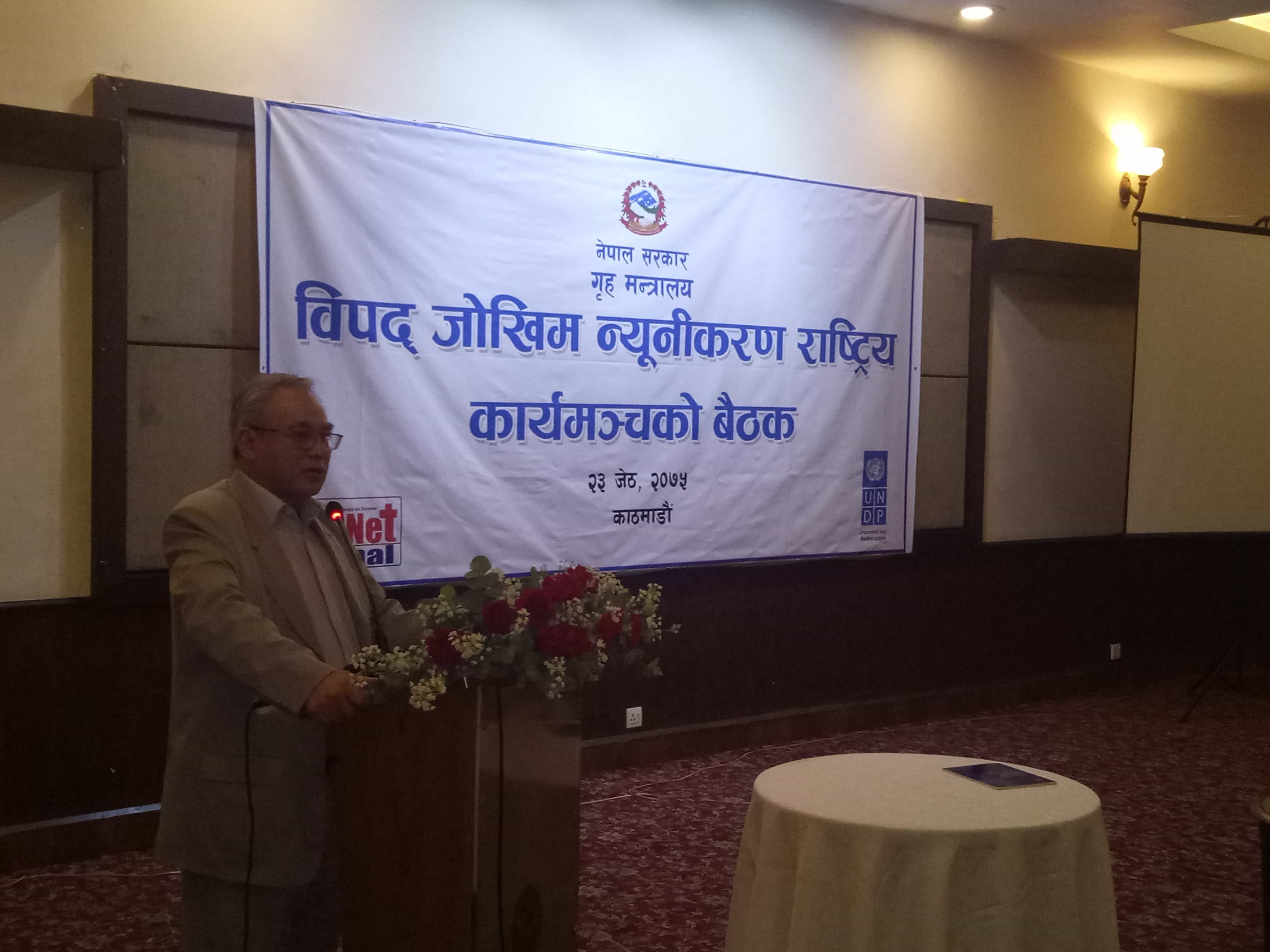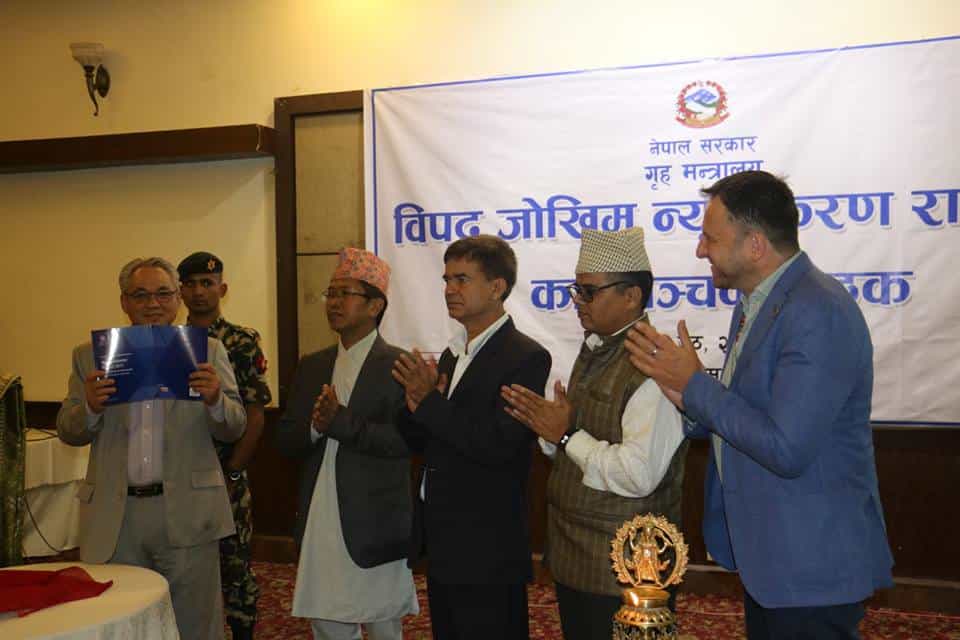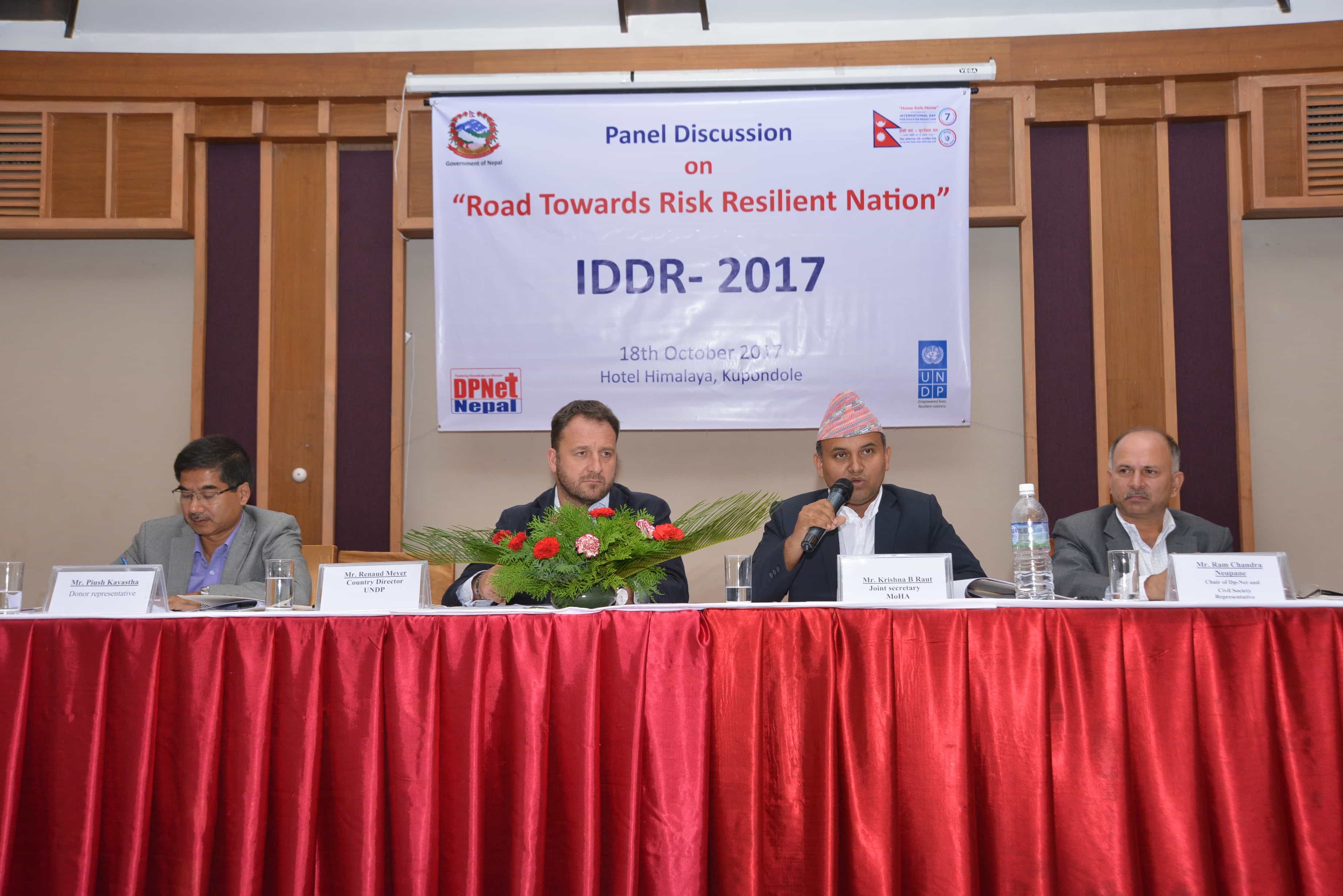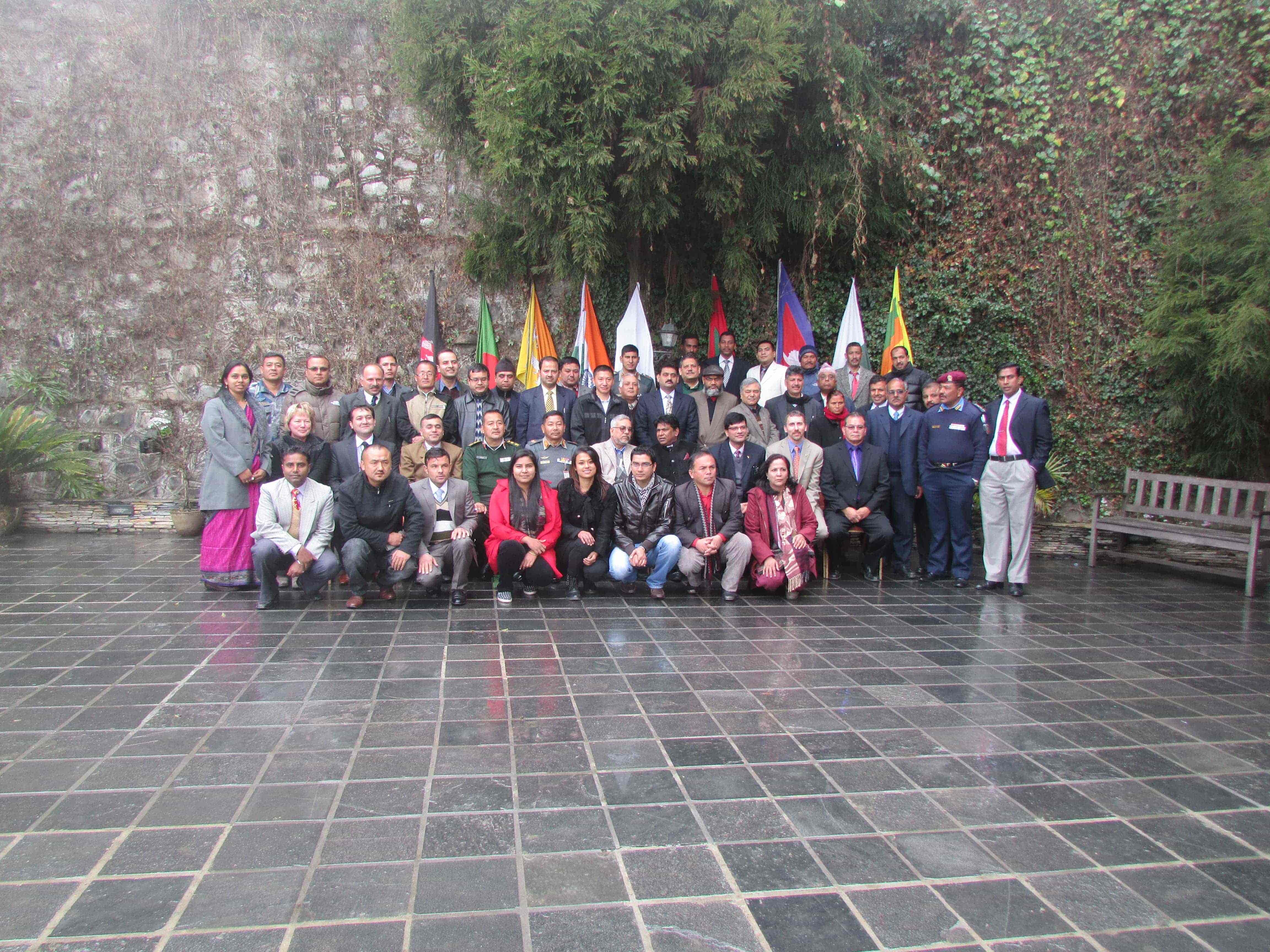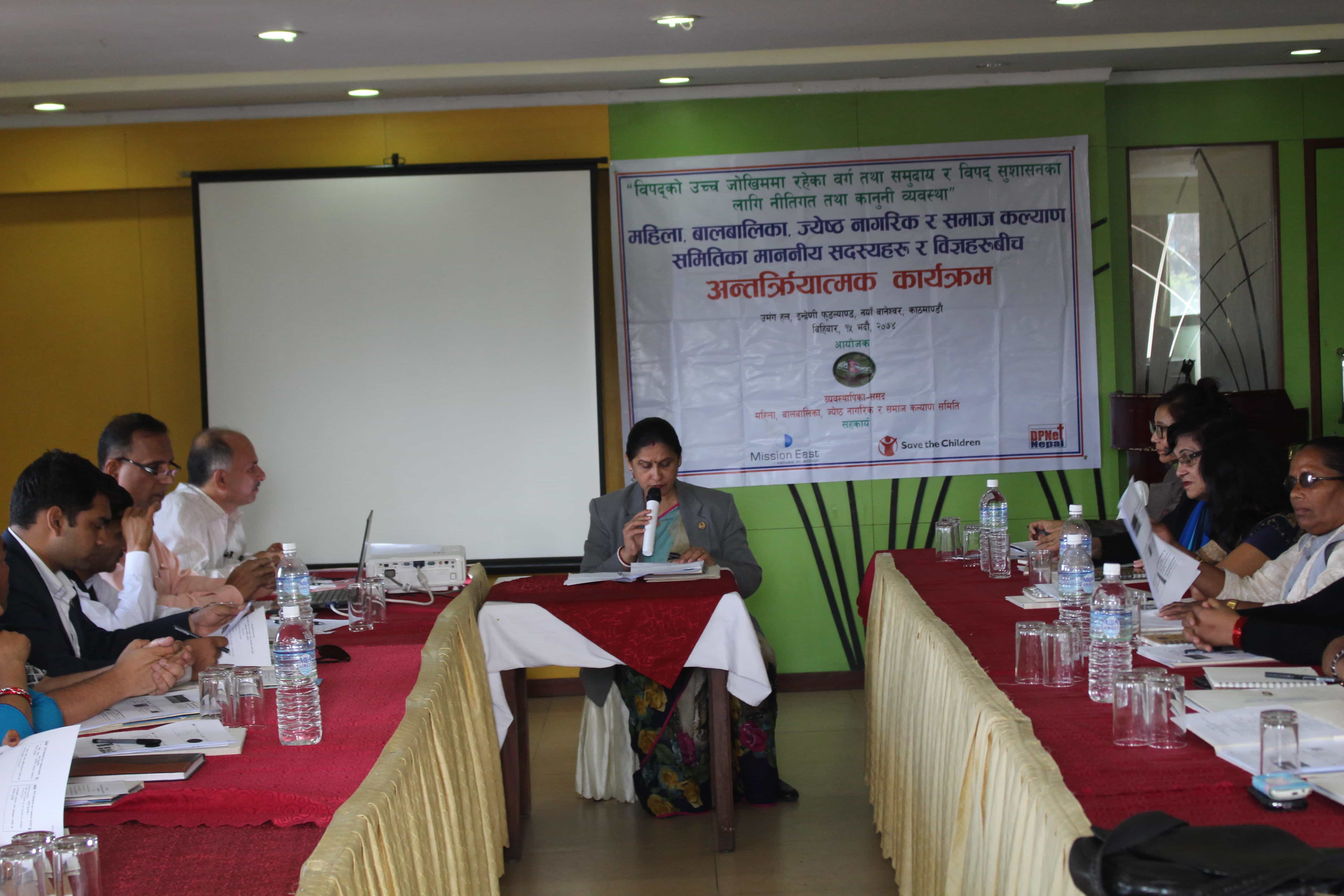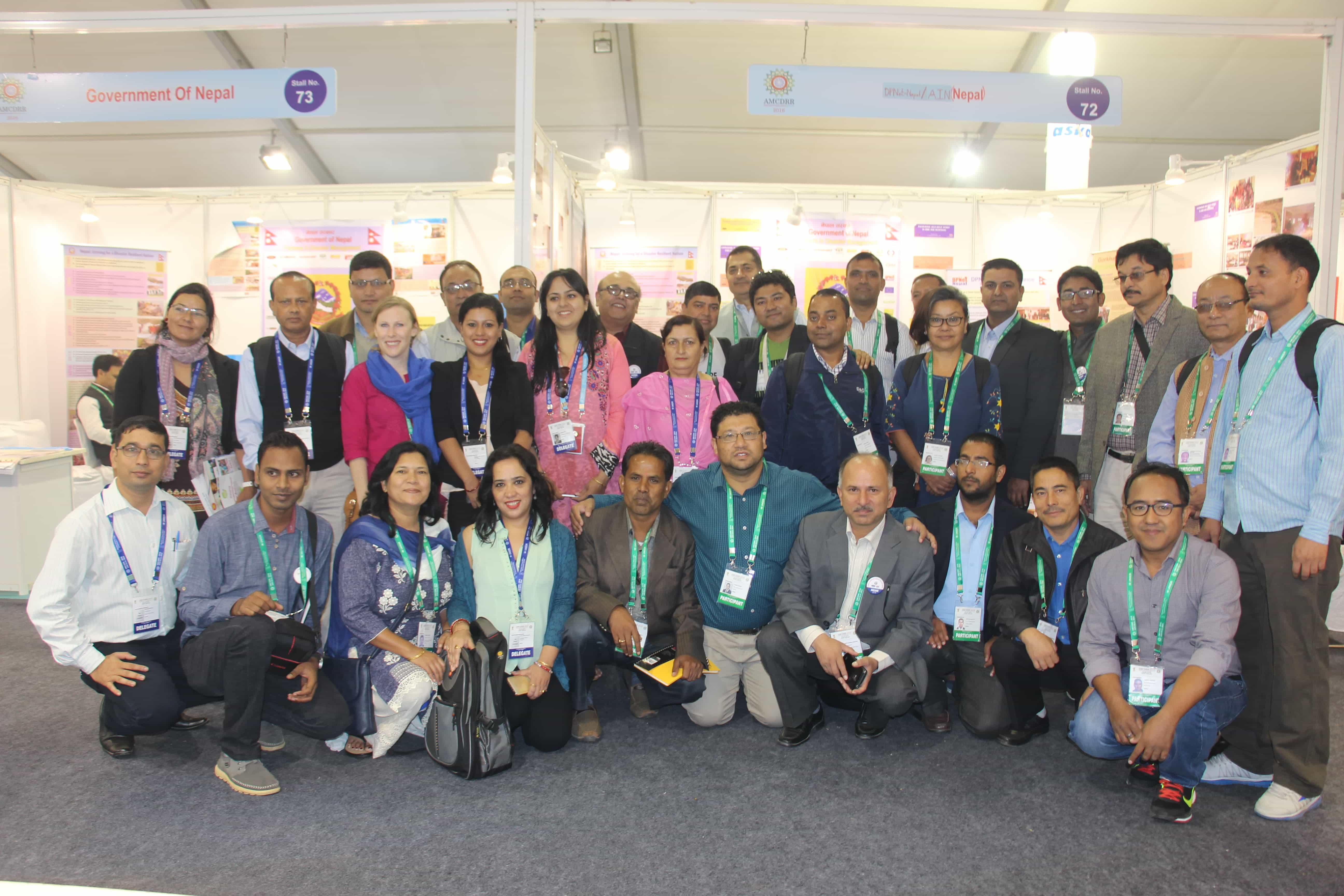Monsoon Preparedness Sensitization Workshop Held in Koshi Province
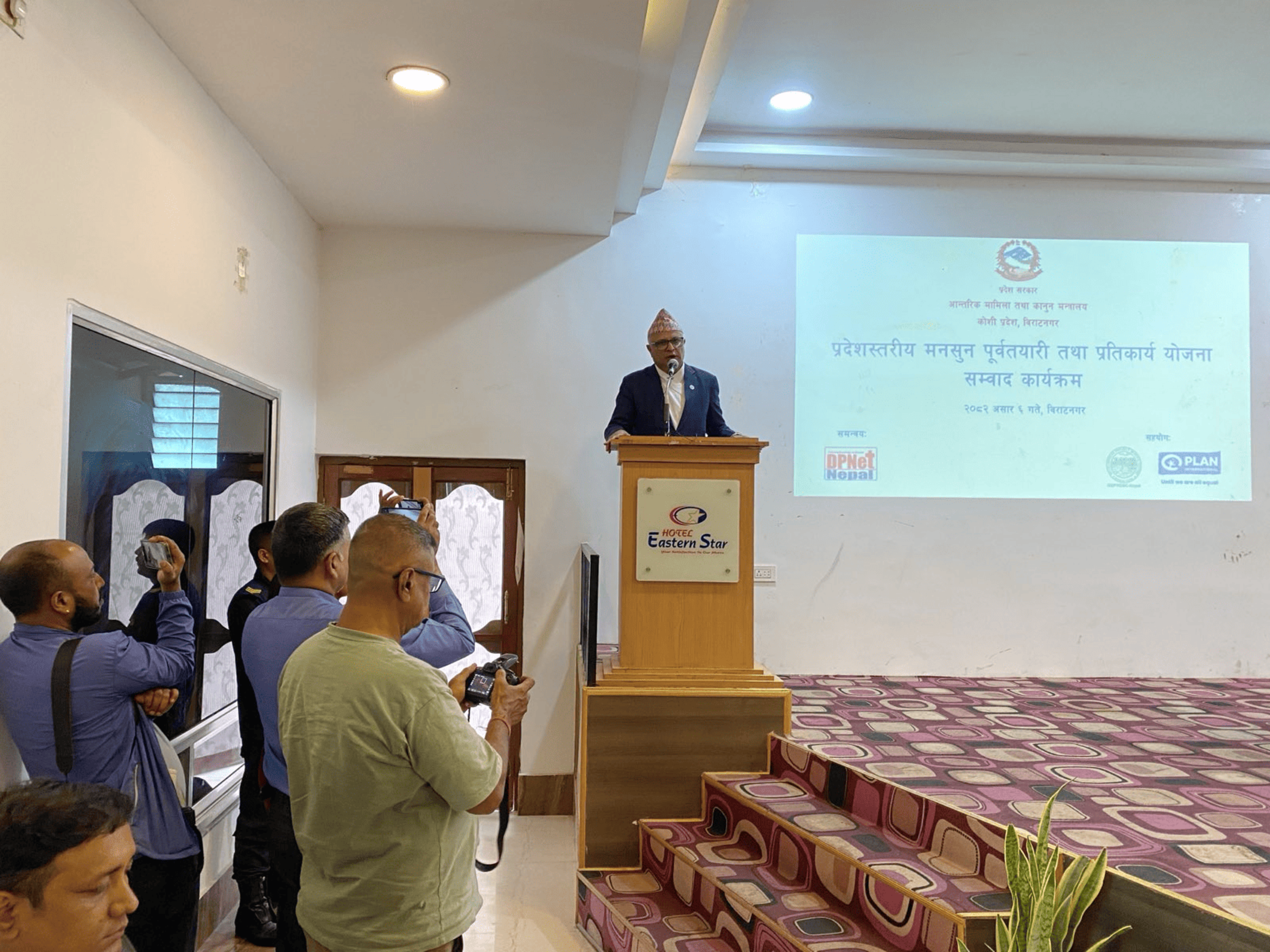
Summary of Event
The Koshi Province Monsoon Preparedness Sensitization Workshop, held on 6 Ashadh 2082 (20 June 2025) in Biratnagar, convened provincial and local officials, security agencies, humanitarian partners, technical experts, and community organisations to align on the Provincial Monsoon Preparedness and Response Plan 2082. Organised by the Ministry of Internal Affairs and Law (MoIAL) with support from DPNet Nepal, PLAN International, and DEPROSC Nepal, the event aimed to forge a shared, action-oriented understanding of Koshi’s heightened flood- and landslide-risk as Nepal’s primary monsoon gateway. Opening remarks from the Hon. Chief Minister and MoIAL leadership highlighted the province’s commitment to evidence-based planning, decentralised coordination, and climate-resilient development.
Five technical presentations set the agenda. Former Secretary Kedar Neupane outlined past, present, and projected monsoon trends, urging multi-layered preparedness that begins at household level and scales to federal institutions. Dr Raju Thapa reviewed the 2081 monsoon’s in picture, highlighting gaps in early warning, response, infrastructure resilience, and public awareness. Senior hydrologist Rudra Bahadur Pariyar projected 45–55 percent above-normal rainfall in high-altitude districts, while Under-Secretary of NDRRMA Goma Devi Chemjong detailed the federal Monsoon Preparedness and Response Plan emphasizing early-warning dissemination, pre-positioned supplies, and Incident Command Systems. Disaster expert Ram Kumar Dahal introduced Koshi’s Monsoon Preparedness and Response Plan 2082, featuring eight thematic clusters, digital risk mapping, Quick Response Teams, and cross-border coordination to address riverine hazards.
Group discussions deepened the dialogue, calling for GEDSI-sensitive risk maps, school-based DRR education, community disaster drills, integration of DHM’s alert service, and stricter controls on riverbank encroachment and resource extraction. Stakeholders highlighted the value of trained volunteers (e.g., NRCS, Nepal Scouts, APF initiatives) and advocated relocating high-risk riverbank settlements while shifting budgets from reactive relief to proactive DRR investment.
The workshop closed with unanimous endorsement of a 13-point Implementation Commitment for Koshi Province. Pledges include an agile community-centred early-warning chain, stockpiled relief supplies, round-the-clock search-and-rescue readiness, transparent aid distribution, gender- and disability-inclusive approaches, critical-infrastructure protection, safe-shelter management, continuity of essential services, accelerated recovery, a strengthened disaster fund, multi-level coordination, continuous monitoring, and regular training drills. These commitments, secured in the signed action plan, guide all provincial actors in translating technical insights into concrete, field-level results in 2082 monsoon season.
Program in details
The monsoon season poses substantial risks to life, property, and infrastructure in Nepal, with Koshi Province being particularly vulnerable due to its diverse topography, river systems, and high incidence of floods and landslides. A dialogue on the Provincial Monsoon Preparedness and Response Plan 2082 was held in Koshi Province, organized by the Ministry of Internal Affairs and Law (MoIAL) in coordination with DPNet Nepal, and supported by PLAN International and DEPROSC Nepal aimed at strengthening inter-agency coordination and enhancing preparedness for the upcoming monsoon season.
The dialogue brought together key stakeholders, including provincial and local government representatives, disaster management authorities, humanitarian agencies, development partners, technical experts, and community-based organizations. The event provided a platform for sharing experiences, reviewing existing preparedness measures, identifying operational gaps, and formulating actionable recommendations to improve response mechanisms at all levels. It highlights the importance of proactive planning, early warning systems, institutional coordination, and community engagement in building resilience against monsoon-induced disasters in Koshi Province.
The overall objectives of the Koshi Province Monsoon Preparedness Sensitization Program was to build a shared, action-oriented understanding among provincial stakeholders for proactive, well-coordinated monsoon preparedness and response.
Synopsis of the Event
The opening session commenced with the national anthem. The event was chaired by the Honorable Minister, Ministry of Internal Affairs and Law, Koshi Province Government, highlighting the provincial administration's commitment to disaster preparedness and governance. The Honorable Chief Minister of Koshi Province graced the occasion as the Chief Guest, highlighting the provincial government’s prioritization of monsoon-related risk mitigation and inter-agency coordination. The Special Guests included the Chief Secretary of Koshi Province, representing administrative leadership; the Division Commander, Eastern Division Headquarters, Nepal Army, emphasizing military support for disaster response; and Secretaries of Provincial Ministries, ensuring cross-sectoral alignment. Additional guest comprised the Chief District Officer of Morang, local governance representatives, and senior security officials: The Deputy Inspector General of Police (Nepal Police) and Deputy Inspector General (Armed Police Force, Nepal), reinforcing the integration of law enforcement and emergency services. The gathering highlighted a unified approach to monsoon preparedness, reflecting the collaborative framework outlined in Koshi Province’s disaster management strategies.
Chairperson: Rewati Raman Bhandari, Honorable Minister, Ministry of Internal Affairs and Law, Koshi Province Government
The Ministry of Internal Affairs and Law, Koshi Province Government, has demonstrated robust preparedness for the monsoon season by finalizing all essential DRR-related documents, including a comprehensive DRR Strategic Action Plan. These DRR policies outline clear protocols for risk mitigation, early warning dissemination, and community engagement, aligning with Nepal’s federal disaster management frameworks. The provincial government has established strong coordination mechanisms with local levels, ensuring decentralized implementation of preparedness measures such as resource allocation, emergency drills, and infrastructure safeguarding. The collaborative efforts with agencies like the Department of Hydrology and Meteorology (DHM) and security forces (Nepal Army, Police) further strengthen real-time monitoring and rapid response capabilities. By integrating local stakeholders and prioritizing data-driven decision-making, the ministry aims to minimize monsoon-induced risks, particularly for vulnerable populations, while fostering resilience through systematic planning and multi-agency synergy.
Mr. Ram Prasad Acharya, Secretary, MoIAL, Koshi Province
The Provincial Government of Koshi Province, through its Ministry of Internal Affairs and Law, convened a dialogue to launch the Monsoon Preparedness and Response Plan, emphasizing collective readiness as the monsoon season officially began on Jestha 18, 2082. The provincial government highlighted its comprehensive preparedness, including the development of a strategic action plan (2018–2030) and digital mapping to identify vulnerable sites at heightened risk due to heavy monsoon rainfall. With the Department of Hydrology and Meteorology (DHM) confirming active monsoon conditions, authorities underscored the threat posed by intense rainfall in Tibet Province, China, which could exacerbate flood risks in the Saptakoshi River and its tributaries. The proactive measures include localized early warning systems, resource allocation for rescue operations, and cross-border coordination to mitigate transboundary impacts. The plan integrates climate resilience into long-term strategies, ensuring Koshi Province is equipped to address monsoon-induced disasters through institutional preparedness, community engagement, and data-driven risk management.
Technical Session on MPRP Dialogue
Technical Presentaiton 1: Monsoon Yesterday, Today and Tomorrow, Kedar Neupane, Former Secretary
The monsoon preparedness strategy for Koshi Province outlines a comprehensive, multi-stakeholder approach involving coordination across federal, provincial, and local levels to enhance resilience against seasonal climate risks. With the 2082 monsoon season expected to bring above-average rainfall, the province, already highly vulnerable to floods, landslides, and waterlogging, must prioritize proactive measures to mitigate potential damage. At the federal level, institutions such as the NDRRMA and the National Emergency Operations Center (NEOC) should be standby. At the provincial level, efforts include risk mapping, budget planning, and policy formulation. Locally, preparations focus on establishing emergency relief warehouses stocked with essential supplies such as medical kits, tents, and water purifiers, along with the formation of community-based volunteer teams.
A major concern highlighted in the plan is the increasing impact of climate change, which has contributed to erratic and excessive rainfall patterns. Human activities such as unplanned road construction, illegal blasting, and deforestation further exacerbate natural hazards by destabilizing slopes and increasing flood risks. The strategy calls for urgent action to address these environmental stressors and restore ecological balance to minimize future damage. Currently, the majority of DRR funding is allocated to relief and rehabilitation efforts, with minimal investment in preparedness. To build long-term resilience, the plan emphasizes that preparedness must begin at the individual and family level, scaling up through community, municipal, district, provincial, and federal levels.
Key components of the preparedness framework include:
- Engineering interventions like gabion walls and eco-friendly slope stabilization techniques to reduce landslide risks.
- Community-led initiatives, including the establishment of "Rapid Response Teams" for localized disaster management.
- Early warning systems utilizing mobile alerts, FM radio broadcasts, and social media platforms, linked with 24/7 emergency helplines and integrated command centers.
- Infrastructure protection, particularly for critical assets such as bridges, which face heightened risk due to debris accumulation during floods.
The post-disaster response protocols emphasize swift rescue operations, temporary shelter provision, psychological support, and long-term recovery measures such as housing grants and livelihood restoration programs. The strategy also underscores the importance of legal frameworks for enforcement, public awareness campaigns, and the integration of indigenous knowledge and local resources into disaster risk reduction efforts. These combined actions aim to create a sustainable, climate-resilient future for the flood-prone and landslide-vulnerable regions of Koshi Province.
Technical Session 2: 2079 B.S. Monsoon review (Pictorial Presentation) Dr Raju Thapa, Chair, DPNet
It was highlighted on the severe impacts of monsoon-related disasters in Nepal, particularly in Koshi Province, during the 2081 monsoon season. It reports widespread casualties, including 535 deaths, 66 missing, and 675 injuries, alongside significant economic losses: NPR 11 billion in infrastructure damage, NPR 6 billion in agriculture and livestock, and NPR 3.5 billion in drinking water systems. The floods, landslides, heavy rainfall, and lightning strikes affected 6,389 families, damaging 2,242 homes and 6,079 livestock shelters. The key incidents include catastrophic floods in the Kankai River, landslides in Sindhuli and Dhading (e.g., Jhaphlekhola landslide killing 35), and infrastructure failures like Hewa Bridge collapse. Challenges identified include inadequate flood/weather monitoring networks, lack of public awareness, gaps in landslide and flash flood early warning systems, and insufficient coordination among stakeholders. Presentation emphasizes the urgent need for improved disaster preparedness, community engagement, and integrated infrastructure resilience to mitigate future monsoon risks.
Technical Presentation 3: Nepal Monsoon Forecast 2082, Rudra Bahadur Pariyar, Senior Divisional Hydrologist, DHM
Nepal’s Department of Hydrology and Meteorology (DHM), operating under the Ministry of Energy, Water Resources, and Irrigation, plays a critical role in monsoon forecasting and disaster preparedness. With regional offices in Kathmandu, Dharan, and Pokhara, the DHM manages a network of 47 weather stations and 26 river-level monitoring sites, utilizing tools like Automatic Weather Stations (AWS), radar sensors, satellite rainfall maps, and global systems like GLOFAS and RIMES. It employs numerical weather prediction (NWP) models and hydrological simulations (e.g., HEC-HMS, Mike11) to generate flood forecasts, disseminating alerts via SMS, social media, websites, and a 24/7 toll-free helpline (1155). For the 2082 monsoon season, projections indicate above-average rainfall in Koshi Province (eastern Nepal), particularly in high-altitude areas like Taplejung and Solukhumbu (45–55% higher than normal), increasing risks of flash floods, landslides, and riverine flooding due to rising temperatures and erratic precipitation patterns. Despite advancements, challenges persist, including insufficient monitoring infrastructure, limited public awareness, gaps in landslide and flash flood early warning systems, and the need for integrated disaster management collaboration. Initiatives like the Regional Monsoon Forum 2082 and expanded real-time monitoring aim to enhance preparedness, emphasizing community engagement and multi-agency coordination to mitigate monsoon-related hazards.
Technical Presentation 4: Federal Monsoon Preparedness & Response Plan 2082, Goma Devi Chemjong, Under Secretary, National Disaster Risk Reduction And Management Authority (NDRRMA)
The Monsoon Preparedness and Response Plan 2082 outlines a comprehensive strategy for disaster preparedness and response during the monsoon season. It emphasizes multi-agency coordination, involving federal ministries, provincial and local governments, security forces (Nepal Army, Police, Armed Police), and humanitarian organizations like the Nepal Red Cross Society and UN agencies. The key priorities include early warning systems (via SMS, social media, sirens), real-time weather and flood monitoring, and timely dissemination of alerts to at-risk communities. The plan details resource allocation, including pre-positioned emergency supplies (tents, blankets, water purifiers) and equipment for rescue operations (boats, heavy machinery). It also highlights capacity-building measures, such as training personnel in search-and-rescue techniques, establishing incident command systems, and enhancing community resilience through awareness campaigns. The challenges identified include insufficient flood monitoring infrastructure, gaps in landslide early warning systems, and the need for improved public awareness. The strategy stresses integrated disaster management, with regular monitoring, post-disaster reviews, and collaboration with international partners (e.g., WFP, UNICEF) to ensure effective response and recovery. The overarching goal is to minimize casualties and economic losses by strengthening preparedness, rapid response, and resource mobilization across all levels of governance.
Technical Session 5: Koshi Provincial Monsoon Preparedness & Response Action Plan 2082, Mr. Ram Kumar Dahal, Disaster Expert and Member of Province Disaster Management Executive Committee (PDMEC)
The "Monsoon Preparedness and Response Plan" emphasizes a structured, multi-tiered approach to disaster risk management across federal, provincial, district, and local levels. It highlights the establishment of 8 thematic clusters, including emergency shelter, health, WASH (Water, Sanitation, Hygiene), education, and logistics to coordinate targeted interventions during monsoon-induced disasters. Key strategies include digital mapping to identify vulnerable sites, pre-positioning of relief supplies (e.g., medical kits, tents, water purifiers), and deploying Quick Response Teams (QRTs) and Incident Response Teams (IRTs) for rapid rescue operations. The plan underscores the importance of inter-agency collaboration, integrating security forces (Nepal Army, Police), humanitarian agencies, and local governments to ensure efficient resource mobilization and real-time monitoring. The emphasis is placed on the community engagement, capacity-building for local volunteers, and leveraging technology (e.g., SMS alerts, social media) for early warning dissemination. Challenges such as sedimentation in rivers like Keshaliya, cross-border flow obstructions, and unplanned infrastructure development are noted, with recommendations for eco-friendly engineering solutions and policy reforms to enhance climate resilience. The framework aligns with Nepal’s broader disaster risk reduction goals, prioritizing inclusive preparedness, equitable resource distribution, and adaptive strategies to mitigate monsoon-related hazards.
Yas prasad Subba, Member, PDMEC
The Ministry of Internal Affairs and Law (MoIAL), Koshi Province, has developed a digital risk map to identify vulnerable areas prone to monsoon-induced disasters, such as floods, landslides, and riverbank erosion. This tool integrates geospatial data to prioritize high-risk zones, enabling targeted preparedness measures like pre-positioning relief supplies, deploying Quick Response Teams (QRTs), and strengthening community early warning systems. During recent events, such as the Sunsari district disaster response, a localized disaster map was shared to coordinate real-time rescue and relief operations. This map highlighted affected settlements, infrastructure vulnerabilities, and evacuation routes, facilitating swift collaboration between security forces, humanitarian agencies (e.g., Nepal Army, Red Cross), and local governments. These initiatives align with Koshi Province’s broader strategy to enhance climate resilience through data-driven decision-making, cross-agency coordination, and community engagement, ensuring timely interventions to mitigate monsoon-related risks and protect vulnerable populations.
Hikmat Karki, Chief Minister, Office of the Chief Minister and Council of Ministers
Disaster resilience must guide Nepal’s growth. Many recent problems such as floods, landslides, bridge failures and rising road traffic accident happen because of careless hillside digging, poor engineering that ignores nature and earthquakes, and weak safety rules. The collapse of a 70-metre Hewa River Bailey bridge and the yearly closure of the Ilam highway show that shortcuts are too costly. May be very citizen should learn basic disaster safety skills, perhaps even before receiving a citizenship card. Simple actions like door to door monsoon-awareness visits, better road-safety rules and a province-wide network that links government, security forces, aid groups and communities can save lives.
Unplanned construction, climate change and carelessness already cost the country huge amount of money each year and could erase recent development gains as Nepal leaves the Least Developed Country list. Disaster-risk reduction must appear in every policy, building rule and public institution. The Ministry of Internal Affairs and Law should lead close cooperation among federal, provincial and local level. Local governments need to map hazards, run public-awareness drives and train young people so that adults have the skills to protect their families. Security forces should support with quick rescues and regular community drills.
Real safety demands early investment. Koshi Province can set aside NPR 100 million to NPR 200 million right away to improve disaster management and build local response teams. Teaching disaster awareness in every school will create a culture of preparedness from childhood. Using solid science, careful planning and active communities, Nepal can limit human-induced disasters and let development and safety progress together.
Group Discussion on the Technical Session
Goma Devi Chemjong, Under Secretary, National Disaster Risk Reduction And Management Authority (NDRRMA)
The integration of the Koshi Province Disaster Risk Reduction (DRR) Portal with the national NDRRMA DRR Portal is critical to ensure seamless data sharing, real-time monitoring, and coordinated disaster response across federal and provincial level. This linkage will enhance situational awareness, enabling targeted resource allocation and early warning dissemination, particularly for high-risk areas prone to monsoon-induced floods and landslides. The equally vital is the incorporation of GEDSI (Gender, Equity, Disability, and Social Inclusion) principles into digital risk mapping, which currently lacks granularity in identifying disabled individuals at the household level. By embedding GEDSI frameworks into mapping tools, authorities can ensure equitable preparedness, prioritizing vulnerable groups, such as persons with disabilities, elderly populations, and marginalized communities, in evacuation plans, shelter allocation, and relief distribution. This dual approach not only strengthens systemic resilience but also aligns with Nepal’s commitment to inclusive, rights-based disaster management, ensuring no one is left behind during crises.
Mr. Krish Ray, Nepal Scout
The community-level disaster preparedness in Nepal’s Koshi Province requires simulated disaster drills to build local resilience, ensuring households, schools, and vulnerable groups are equipped to respond effectively during monsoon-induced crises like floods and landslides. The school must prioritize Disaster Risk Reduction (DRR) education, integrating safety protocols, evacuation practices, and climate-awareness programs to empower students as agents of change within their families and communities. The Nepal Scouts , with over 30,000 members nationwide, including 75 trained DRR volunteers in Koshi Province and 500 nationally, play a vital role in grassroots response efforts. Their Quick Response Teams (QRTs) can be rapidly mobilized for search-and-rescue operations, early warning dissemination, and distributing relief supplies during emergencies. This aligns with provincial strategies emphasizing multi-agency collaboration, digital early warning systems, and community-led initiatives to address gaps in flood monitoring and landslide risks. By leveraging trained volunteers, institutional networks, and localized drills, Nepal aims to strengthen its disaster response ecosystem, reducing casualties and economic losses while fostering a culture of preparedness in high-risk regions like Koshi.
Mr. Bahadur Saday, Progam Manager, Dalit Janajagran Yuwa Club
The monsoon preparedness and response plan must prioritize child-focused strategies at the ward level, ensuring children are informed and protected through localized disaster risk reduction (DRR) initiatives. For individuals without access to mobile phones, alternative outreach methods, such as community loudspeakers, radio broadcasts, printed materials, and door-to-door campaigns led by local volunteers, are essential to bridge communication gaps. Schools can serve as critical hubs for disseminating DRR knowledge by integrating disaster preparedness into curricula, conducting emergency drills, and training teachers to educate students on early warning signs and safety protocols. This multi-layered approach fosters inclusivity, leveraging existing social networks and institutions to empower vulnerable groups, including children and marginalized communities, while strengthening grassroots resilience against monsoon-related hazards.
Mr. Rudra Pariyar, DHM
The monsoon preparedness and response plan has overlooked the inclusion of the DHM in its strategic framework, leading to a critical gap in coordination with Nepal’s key agency responsible for weather forecasting and flood monitoring. This omission risks undermining the integration of DHM’s expertise in real-time data sharing, early warning systems (e.g., the 1155 toll-free helpline), and localized risk assessments. To address this, the plan must prioritize orienting 1155 monsoon-related alerts toward every community, ensuring accessible, multilingual communication via SMS, social media, and public broadcasts. By embedding DHM’s insights and tailoring warnings to local contexts, such as high-risk areas identified in Koshi Province, the response can enhance public awareness, bridge coordination gaps, and ensure vulnerable populations receive timely, actionable information to mitigate monsoon-induced disasters.
Ms. Mamata Shah, Participant
The monsoon season poses heightened risks for vulnerable populations, including the elderly, disabled individuals, and single women, who are disproportionately affected by flooding, landslides, and displacement. Ensuring their safety requires collective engagement across communities, governments, and organizations to strengthen inclusive disaster preparedness. Proactive measures, such as accessible early warning systems, community-based rescue operations, and targeted relief distribution, must prioritize their unique needs. Integrating SADD (Support for At-Risk and Disadvantaged Groups) into monsoon response plans is critical to address systemic gaps in protection and resource allocation. This aligns with broader strategies outlined in Nepal’s provincial disaster frameworks, which emphasize multi-stakeholder collaboration, localized risk mapping, and empowering marginalized communities through tailored interventions. By embedding SADD into monsoon planning, authorities can ensure equitable resilience-building and safeguard the most vulnerable during climate-induced crises.
Mr. Kedar Shah, SDRC, Technical program Advisor
Establishing DRR (Disaster Risk Reduction) Volunteer Champions at the community level can empower localized resilience by training individuals to educate and mobilize residents on preparedness measures, early warning systems, and response protocols. Complementing this grassroots approach, integrating digital data into mobile applications can enhance accessibility to real-time disaster-related information, such as weather alerts, evacuation routes, and resource distribution points. This combination of community-driven leadership and technology-driven solutions ensures inclusive, timely, and actionable engagement, particularly for vulnerable groups like the elderly, disabled, and marginalized populations, fostering a proactive culture of safety and collective accountability during monsoon and other climate-induced crises.
Mr. Bramahadev Yadav, Asman Nepal
The effective utilization of local-level resources is critical in monsoon preparedness and response, particularly in high-risk regions like Nepal’s Koshi Province. The local governments, community-based organizations, and trained volunteers, such as the Nepal Scouts (with over 30,000 members nationally and 75 trained DRR volunteers in Koshi), play a pivotal role in early warning dissemination, search-and-rescue operations, and distributing relief supplies. the schools and community centers serve as hubs for disaster risk reduction (DRR) education, equipping residents with evacuation protocols and safety measures. Digital tools, including SMS alerts via the 1155 helpline and social media, enhance real-time communication, while localized risk mapping identifies vulnerable areas for targeted interventions. Local infrastructure, such as emergency shelters and pre-positioned relief materials (tents, water purifiers), ensures rapid response. However, challenges persist, including gaps in flood monitoring networks and public awareness, underscoring the need for stronger coordination between provincial authorities, security agencies (e.g., Nepal Army, Police), and grassroots networks. By empowering local communities through capacity-building, inclusive planning, and leveraging traditional knowledge, Koshi Province can build resilience against monsoon-induced disasters like floods and landslides, reducing reliance on external support and ensuring faster, context-specific action.
Ms. Sita Sharma, Koshi Province, DPNet Nepal
The Koshi Province , highly vulnerable to monsoon-induced disasters like floods and landslides, requires proactive relocation of riverbank communities during high-risk periods to minimize casualties, as highlighted in recent reports of catastrophic events such as the Jhaphlekhola landslide (2081) and Kankai River floods. While the province allocates significant funds for disaster management, such as NPR 11 billion in infrastructure repairs post-2081 monsoons, the focus must shift from reactive response to preemptive Disaster Risk Reduction (DRR) investments , including resilient infrastructure, early warning systems (e.g., SMS alerts via the 1155 helpline), and community-based training programs. The Ministry of Internal Affairs and Law (MoIAL) should prioritize institutionalizing DRR preparedness by redirecting budgetary resources toward hazard mapping, eco-friendly engineering solutions (e.g., gabion walls), and school-level DRR education. Additionally, MoIAL must formally engage DPNet Koshi , a key coordination body, to strengthen multi-stakeholder collaboration, integrate localized risk data, and ensure alignment with federal and provincial response frameworks. By embedding DPNet’s expertise in digital monitoring, resource mobilization, and community engagement, Koshi can transition from crisis management to systemic resilience-building, addressing gaps like sedimentation in rivers (e.g., Keshaliya) and unplanned development that exacerbate vulnerabilities. This approach aligns with Nepal’s broader goal of graduating from LDC status while safeguarding developmental gains against climate-induced setbacks.
Mr. Bajrang Bali Shah, Participant
Nepal’s Koshi Province faces escalating risks as unplanned encroachment into riverways disrupts natural drainage systems, exacerbating flood and landslide impacts during monsoon seasons. Deforestation, illegal sand mining, and infrastructure development along riverbanks, such as roads and settlements, have heightened vulnerabilities, as seen in catastrophic events like the 2081 Jhaphlekhola landslide (35 deaths) and Kankai River floods. These human-induced disasters underscore the urgent need to enforce ecological boundaries and integrate climate-resilient engineering into development plans. To mitigate such risks, local-level emergency response teams must be established and trained to lead evacuations, coordinate rescue operations, and disseminate early warnings. Initiatives like Nepal Scouts’ Quick Response Teams (QRTs), community volunteers, and digital tools (e.g., SMS alerts via the 1155 helpline) can empower grassroots preparedness. Strengthening these localized capacities, aligned with provincial strategies like the NDRRMA Monsoon Plan 2082 , ensures rapid, inclusive action, particularly for marginalized groups (e.g., disabled individuals, elderly populations). By prioritizing riverway protection, enforcing land-use regulations, and investing in trained local responders, Koshi Province can reduce casualties and economic losses, safeguarding developmental progress against climate-induced setbacks.
Mr. Kumar Neupane, DIG, Armed Police Force (APF)
The Armed Police Force (APF) in Nepal is implementing an 18-day training program in Jhapa Khecklalan and Bedana municipalities to build capacity among community-based disaster volunteers. This initiative aims to strengthen local resilience by equipping residents with skills in disaster preparedness, early warning systems, and response mechanisms. The program emphasizes leveraging these trained volunteers at the local level to enhance community-led disaster risk reduction efforts, ensuring timely and effective action during emergencies such as floods, landslides, and other monsoon-related hazards. By fostering grassroots engagement, the APF seeks to empower municipalities to address vulnerabilities through localized, trained human resources.
Closing Remarks
Mr. Indradev Yadav, CDO, Morang District
The District Disaster Management Committee (DDMC) in Morang consistently updates the District Preparedness and Response Plan (DPRP) at the local level to enhance resilience against monsoon-related disasters. National and feeder highway Quick Response Teams (QRTs) and Incident Response Teams (IRTs) are actively deployed to ensure uninterrupted traffic flow during emergencies. Historical floods, such as the Sunsaru 2078 Karktik 1 flood (which impacted 14 districts) and the Ashad 2078 Chitwan district flood (where a Simtal-bound bus was swept away), served as critical lessons, prompting coordinated efforts led by Koshi Province’s Chief Minister to mobilize all available resources. During the Asoj 11–13, 2081 flood, timely forecasts and travel advisories were issued, with Chitwan district demonstrating prompt action. However, a tragic landslide in Jhyaple, triggered by a vehicle traveling from Tanahun district, highlighted the unpredictable risks despite preparedness measures. Digital documentation and accessible systems have proven vital for efficient disaster management, enabling real-time updates, coordination, and resource allocation to mitigate impacts and save lives.
Pitambar Prasad Acharya, Executive Director, DEPRSOC Nepal
Nepal’s Koshi Province faces heightened monsoon-related risks, including floods, landslides, and infrastructure damage, exacerbated by climate change and unplanned development. The DHM predicts above-average rainfall in 2082, particularly in Koshi’s high-altitude regions, necessitating urgent preparedness. Multi-agency coordination, as outlined in the NDRRMA MPRT, real-time flood monitoring, early warning systems, and pre-positioned resources like rescue boats and emergency shelters. Community-based initiatives, such as training local can bridge the gaps in disaster response. Challenges persist, including sedimentation Koshi river, illegal extraction of river materials and cross-border river flow obstructions by Indian infrastructure projects. Digital tools, school-based disaster education, and nature-based solutions should be prioritized to enhance community resilience, while intergovernmental collaboration remains important to address transboundary challenges and ensure equitable, data-driven disaster management.
Mr. Jibacha Kumar Ray, Chair, Barju Rural Municipality
At the local level, disaster risk reduction (DRR) awareness programs have been conducted in three wards to enhance community preparedness. The Keshaliya River, however, faces significant sedimentation issues, with excess silt carried into India but remaining underutilized locally for agricultural or developmental purposes. Illegal sand and gravel extraction activities were reported along the riverbanks during nighttime, exacerbating environmental degradation. Systematic land-use planning is urgently needed to clearly demarcate agricultural zones and infrastructure development areas to avoid encroachment and resource conflicts. Additionally, Nepal experiences recurrent flooding due to river flow obstructions caused by roads constructed by India along the border, which disrupt natural drainage patterns and inundate downstream areas. Addressing these challenges requires cross-border coordination, stricter enforcement against illegal mining, and integrated watershed management to balance ecological health with community needs.
Mr Kamal Bahadur Thapa, Under-Secretary, MoIAL
The efforts of the presenter were warmly acknowledged, highlighting the DHM for its effective monsoon projections and forecasting, which have proven critical in anticipating and mitigating climate-induced risks in Koshi Province. The Chief Minister emphasized strong provincial support for DHM’s work, pledging sustained collaboration to align local preparedness with national forecasts. The NDRRMA Monsoon Preparedness and Response Plan 2082 is priased for its comprehensive framework, with Koshi Province integrating its DRR strategies, including digital risk mapping, into the national DRR Portal for enhanced coordination. Dr. Raju Thapa’s pictorial presentation illustrated the disparity between policy commitments and ground realities through visual storytelling, urging the province to bridge implementation gaps. The provincial government is actively partnering with security agencies, particularly the Armed Police Force (APF), to conduct disaster simulation exercises, ensuring rapid, coordinated responses to floods and landslides. These efforts highlight a unified approach to resilience-building, combining technological tools, inter-agency collaboration, and actionable insights to address monsoon-related challenges in one of Nepal’s most vulnerable regions.
Implementation Commitments for the Koshi Province Monsoon Preparedness and Response Provincial Action Plan 2082
After gathering structured feedback from participants during the closing session, the organizing team consolidated the most urgent recommendations into a single action framework. This consensus document was formally endorsed on-site as the “Implementation Commitments for the Koshi Province Monsoon Preparedness and Response Action Plan 2082,” detailing concrete tasks, timelines, and responsible agencies. The commitments guide all provincial stakeholders in turning the workshop’s technical insights into coordinated, on-the-ground results. Agreed commitments unofficial translation is as below:
- Agile, community-centered early-warning system: We will deliver hazard alerts and warnings to at-risk areas and communities on time, making maximum use of both indigenous knowledge and modern information technology to strengthen the early-warning chain.
- Stockpiling and regular updates: As part of monsoon readiness, we will procure, service and pre-position essential rescue, relief and equipment. Provinces and districts will keep adequate reserves of food, medicines, tarpaulins and other critical supplies, updating and monitoring those stocks regularly.
- Rapid search-and-rescue capacity: Personnel, equipment and resources needed for immediate search-and-rescue operations will remain in a constant state of readiness. We will expand volunteer rescue teams in high-risk zones, build community volunteer numbers and skills, and maintain a well-functioning Incident Command System across all security forces.
- Fast and transparent relief distribution: We will ensure timely, equitable and transparent delivery of relief items to affected people. An efficient system will be in place for distributing food, safe drinking water, temporary shelter materials, clothing and first aid.
- Gender equality and social inclusion: Every phase of disaster management will prioritise gender equality and social inclusion. Special protection and assistance will be arranged for women, children, persons with disabilities, the elderly and other vulnerable groups, guaranteeing their participation and leadership in decision-making.
- Infrastructure and structural protection: We will focus on reinforcing critical infrastructure to reduce flood and landslide risks. Measures such as river-bank protection, effective embankment construction and safe-settlement development will be adopted to minimise future disaster losses.
- Safe shelter management: Each local government will pre-identify temporary safe shelters and update their details regularly. All shelters will include adequate sanitation and disability-friendly facilities so displaced people can be housed safely when needed.
- Continuity of essential services: Even during disasters, we will keep basic services running wherever possible. Specific action plans will restore water supply, health care, power and telecommunications quickly if they are disrupted.
- Speedy recovery and rehabilitation: Post-disaster recovery and rehabilitation will be swift and effective. We will rebuild housing for affected families, restore livelihoods through employment and income programmes, and offer necessary psychosocial support to ensure sustainable recovery.
- Dedicated budget and funds: Adequate financial resources for disaster management will be arranged in advance. A strengthened disaster fund will allow rapid disbursement of emergency budgets and relief payments when disasters occur.
- Coordination with multiple stakeholders: We will maintain close coordination and information exchange among federal, provincial and local levels. Clear division of roles and cooperative action with security forces, local bodies, the Red Cross and development partners will ensure a joint response.
- Continuous monitoring and evaluation: All preparedness and response activities under this plan will be monitored and evaluated regularly. Lessons learned will guide corrective actions to guarantee effective implementation.
- Stakeholder participation: Meaningful participation of stakeholders and communities will be ensured at every stage of disaster risk management. Partnerships with the Nepal Red Cross, NGOs, the private sector, academic institutions, local communities and youth volunteers will drive preparedness and response efforts with shared ownership.
- Training and drills: Regular training, drills and simulation exercises will be conducted to maintain readiness for emergencies. Community capacity will grow through ongoing awareness campaigns and rescue-focused training at local and community levels.
